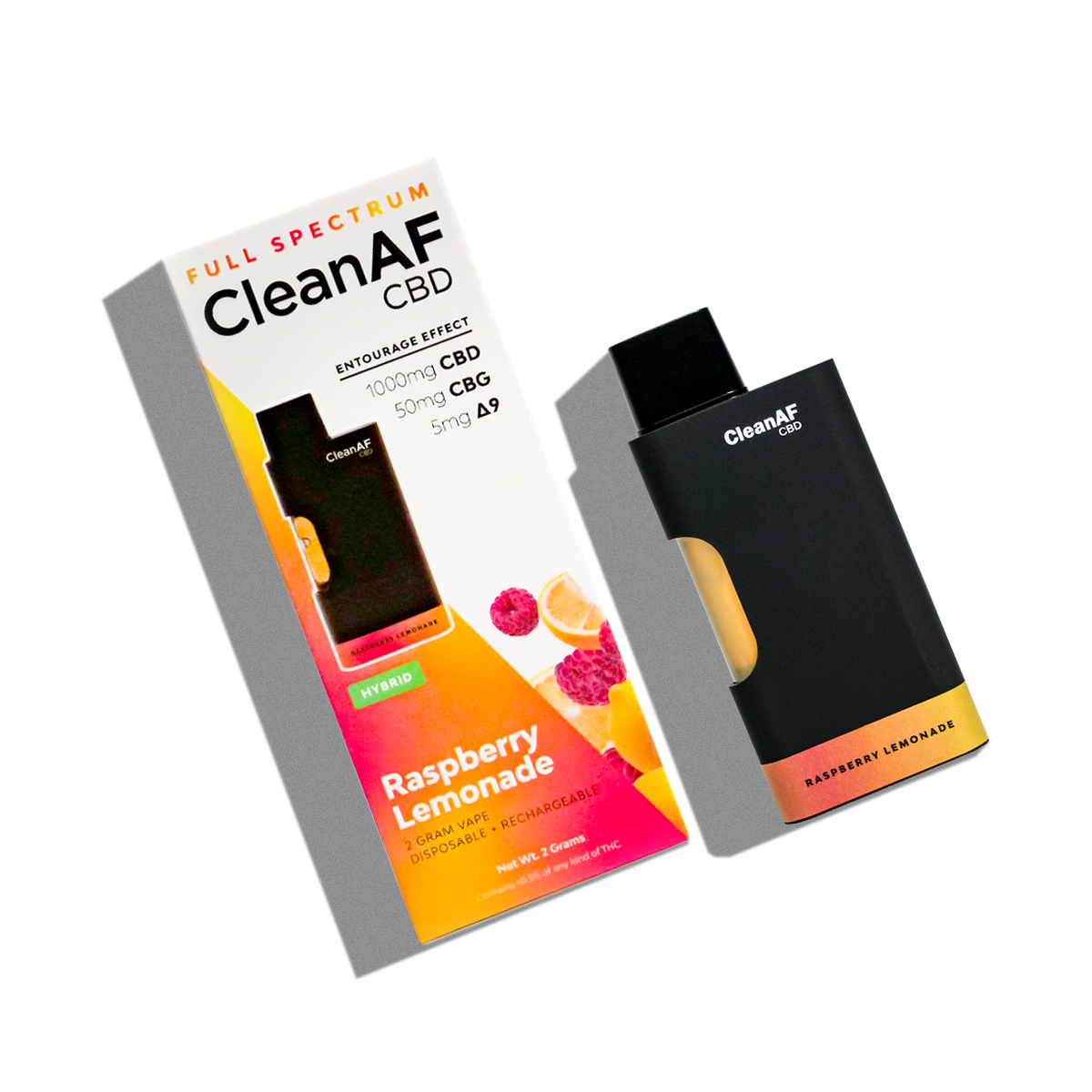
How is CBD made?
CBD, or cannabidiol, is typically extracted from the Cannabis sativa plant, most commonly derived from industrial hemp, which contains less than .3% Delta 9 THC by dry weight.

The Steps of CBD Production
-
Harvesting
The process begins with the harvesting of the cannabis plants. Hemp is often preferred for CBD extraction because it contains lower levels of THC (tetrahydrocannabinol), the psychoactive compound in cannabis.
-
Drying
After harvesting, the plants are dried to remove excess moisture. This step is crucial to prevent the growth of mold during subsequent processing.
-
Extracting
CBD is extracted from the dried plant material through various methods. Common extraction methods include:
- CO2 Extraction: This method uses pressurized carbon dioxide to extract CBD. It is considered a safe and efficient method.
- Solvent Extraction: Solvents like ethanol or butane can be used to dissolve and extract CBD from the plant material. After extraction, the solvent is evaporated, leaving behind the CBD extract.
- Olive oil Extraction: This traditional method involves using olive oil to extract cannabinoids from the plant. While it's safe, it is less commonly used in commercial production.
-
Winterization
This step involves removing unwanted compounds such as fats and waxes from the extracted CBD. It is done by mixing the extract with ethanol and freezing it. The undesirable substances solidify and can be filtered out.
-
Distillation
The CBD extract undergoes distillation to further purify it. This process separates different cannabinoids and refines the CBD.
-
Isolation of CBD
The final step involves isolating pure CBD from the refined extract. This can be done through various methods, such as chromatography.
-
Testing and Quality Control
The extracted CBD is often tested for potency and purity. This ensures that the final product meets quality standards and regulatory requirements.
It's important to note that the legality of CBD products can vary depending on the source and local regulations. Additionally, the extraction method can impact the quality and safety of the CBD product. Consumers should choose products from reputable manufacturers who provide third-party lab testing results for transparency and quality assurance.

Want to learn more about the production of the CBD used in our products?
All CleanAF CBD products start out as naturally grown hemp harvested in the USA.
The process of our CBD production begins with the harvesting of cannabis plants. Hemp (containing <.3% Delta 9 THC) is typically preferred for CBD extraction due to its lower THC content, ensuring that the final product has minimal psychoactive effects. After harvesting, the plants undergo a drying process to remove excess moisture. This step is essential to prevent the growth of mold and maintain the integrity of the plant material.
The extraction of CBD from the dried plant material is a key step in the manufacturing process. Different methods can be employed for extraction, each with its advantages and considerations. One common method is CO2 extraction, where pressurized carbon dioxide is used to extract CBD from the plant. This method is known for its efficiency and safety. Another approach involves solvent extraction, utilizing substances like ethanol or butane to dissolve and extract CBD. After extraction, the solvent is evaporated, leaving behind the CBD extract. Olive oil extraction, a traditional method, involves using olive oil to extract cannabinoids from the plant.
Following extraction, the CBD extract undergoes various refinement steps to ensure purity and eliminate unwanted compounds. Winterization is a process that removes fats and waxes from the extract by mixing it with ethanol and freezing it. Distillation is then employed to further purify the CBD, separating different cannabinoids and refining the extract.
Isolating pure CBD from the refined extract is the next critical step. This can be achieved through methods like chromatography, which separates and purifies individual compounds. The final product is then subjected to rigorous testing for potency and purity. Quality control measures ensure that the CBD product meets regulatory standards and is safe for consumption.
The materials related to CBD production also include the source of the plant. Hemp-derived CBD is legal in many places due to its low THC content, while marijuana-derived CBD may be subject to stricter regulations. The extraction method is another crucial factor influencing the quality of the final product. Consumers are advised to choose products from reputable manufacturers that provide third-party lab testing results for transparency and quality assurance.
The legality of CBD varies globally and is subject to change based on evolving regulations. In some regions, CBD is considered a supplement, while in others, it may be classified as a medication. It's essential for consumers to stay informed about local regulations to ensure compliance.
In conclusion, the production of CBD involves a series of carefully orchestrated steps, from plant cultivation to extraction, refinement, and quality control. Understanding how CBD is made and being aware of related materials empowers consumers to make informed choices and navigate the expanding market of CBD products.

The CleanAF CBD Process
The CleanAF CBD process is quite simple! It all starts with the highest quality raw CBD ingredients. Our CBD is tested at a third-party ISO certified analytical chemistry lab for pesticides, heavy metals, and THC content to ensure you are receiving a safe product free from any possible contaminants.
Once the CBD arrives at the CleanAF Facility in Clearwater Florida, a sample is sent to a 3rd party lab to double-check for quality. When the quality has been verified it is taken to the mixing room where the product will be mixed and flavored. After the mixing process is done it is once again sent to a 3rd party lab in order to check for product potency to ensure that our labels and packaging are accurate. Once potency is verified, the components hit the assembly line.
Once the finished CBD oil reaches the assembly line it is filled, bottled, and/or packaged. When the product is completed, it is reviewed by our highly trained quality control specialists. If everything passes approval, then the products are sent off to our distributors and retail stores before reaching you!
Will CleanAF CBD Show on a drug test?
While we can confidently stand behind our 3rd party lab tests, it’s important to understand the mechanics of cannabinoids and drug testing. Our products can be tested to ensure safety and content, and also that they are either THC free or contain compliant levels of THC. However, we can not deem this a reliable indicator of drug testing results, as there are several testing methods that may be applied with varying results.
What makes CleanAF different?
-

Manufactured in the USA
See FAQsAll CleanAF CBD products are filled, assembled and packaged at our manufacturing facility in Clearwater, FL.
-

Independently Lab Tested
View Lab ResultsAll of our products are third-party lab tested to ensure everything you use that bears our name is accurately labeled and safe to use.
-

Quality Guaranteed
Read MoreEvery CleanAF CBD product comes with a 100% Quality Guarantee. If you ever run into issues - Please let us know!
FDA Stance on CBD
As of my last knowledge update in January 2022, the U.S. Food and Drug Administration (FDA) has been actively evaluating the regulatory status of CBD (cannabidiol) products. The FDA's stance on CBD has evolved over time, and several key points can be highlighted:
FDA Approval - The FDA has approved a prescription medication called Epidiolex, which contains purified CBD, for the treatment of seizures associated with certain rare forms of epilepsy. This approval signifies the acknowledgment of CBD as a therapeutic substance under specific medical conditions.
Concerns about Unsubstantiated Health Claims - The FDA has expressed concerns about the marketing of CBD products with unproven health claims. The agency has emphasized the importance of conducting rigorous scientific research to support the safety and efficacy of CBD in various uses.
Regulatory Uncertainty - The regulatory framework for non-prescription CBD products, including dietary supplements and food products, has been less clear. The FDA has worked to gather information and conduct studies to address safety concerns, potential adverse effects, and appropriate regulatory pathways.
Enforcement Actions - The FDA has taken enforcement actions against companies making exaggerated health claims or selling CBD products that do not meet regulatory standards. This includes warning letters to companies violating FDA regulations.
It's important to note that regulatory developments may have occurred since my last update, and the FDA's stance on CBD may have evolved. Individuals should check the FDA's official website or other reliable sources for the latest information on CBD regulations and the FDA's position.
See all that we offer...
-

THC Vape Pen
CleanAF CBD 2 Gram Full Spectrum CBD disposable THC vape pen. Utilizing...
-

Nicotine Free Vape Pens
Looking to "kick the nic" and switch to a healthier alternative? Clean...






